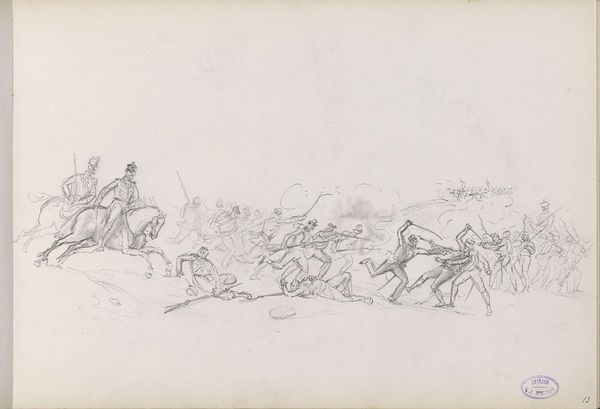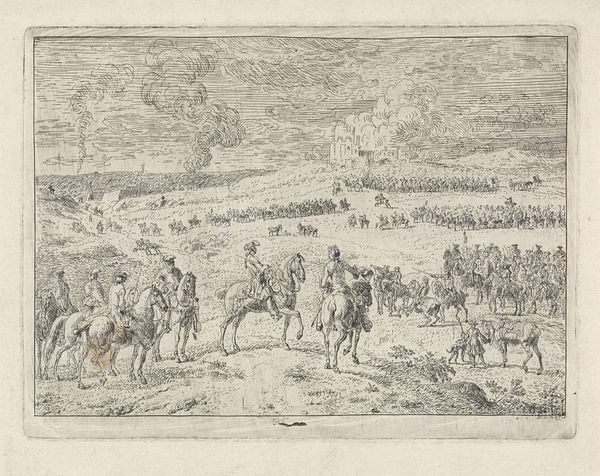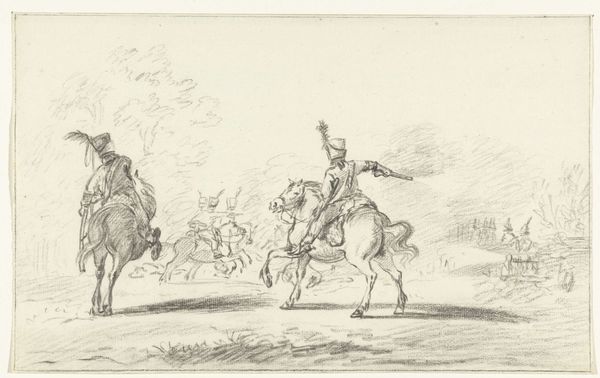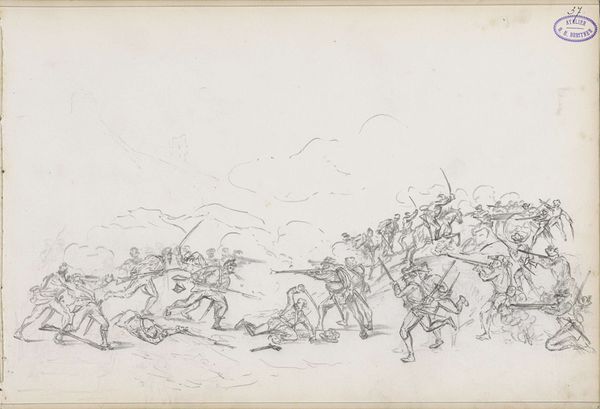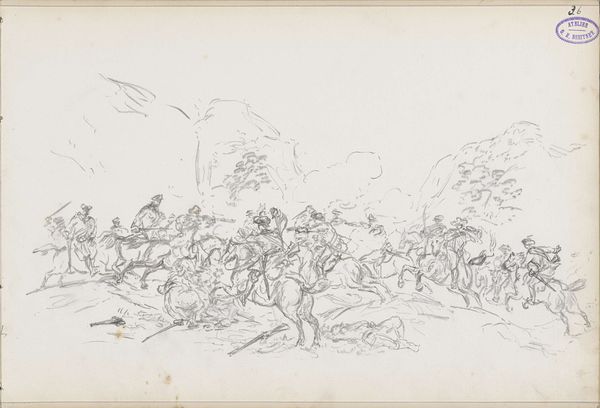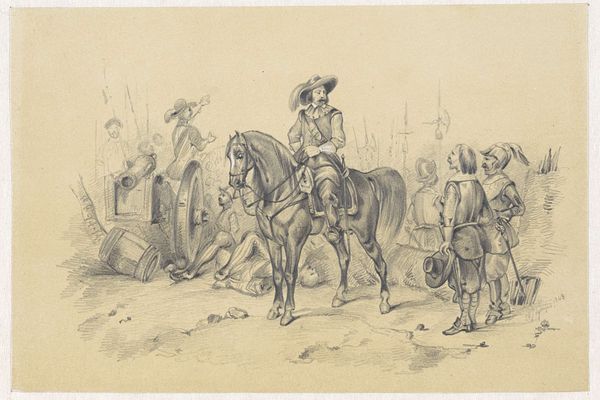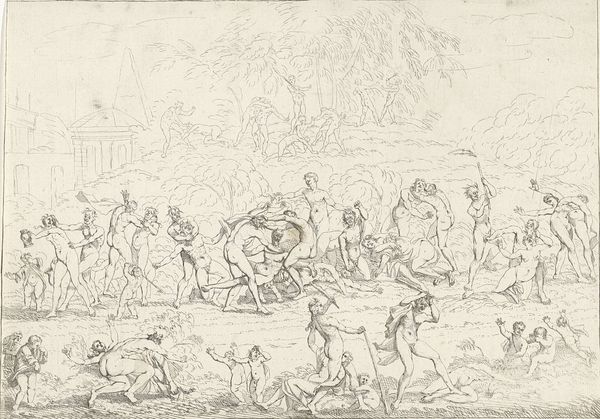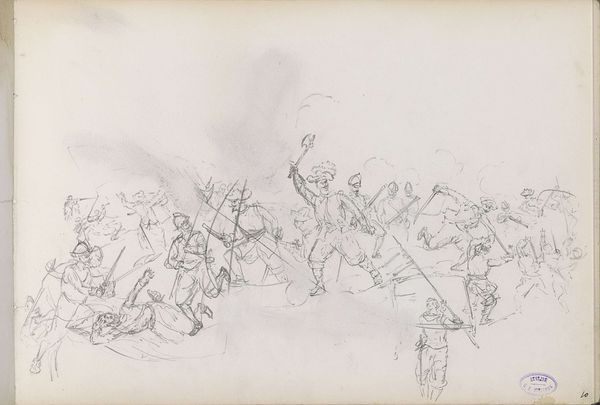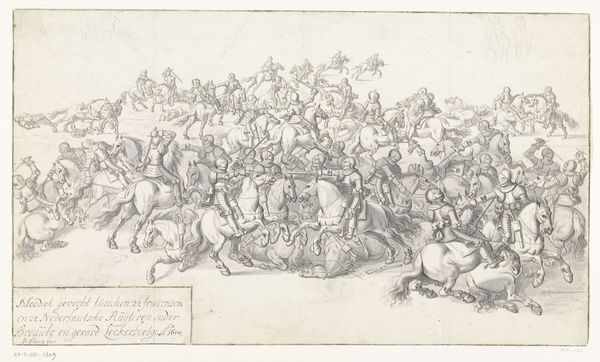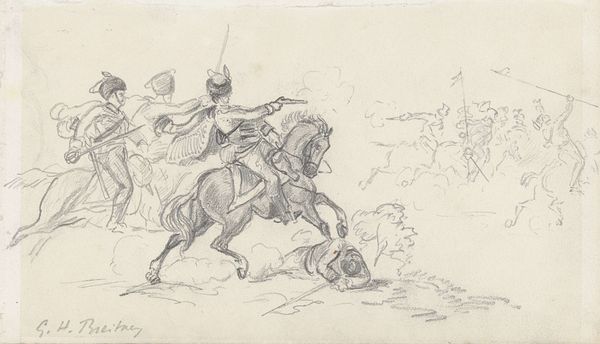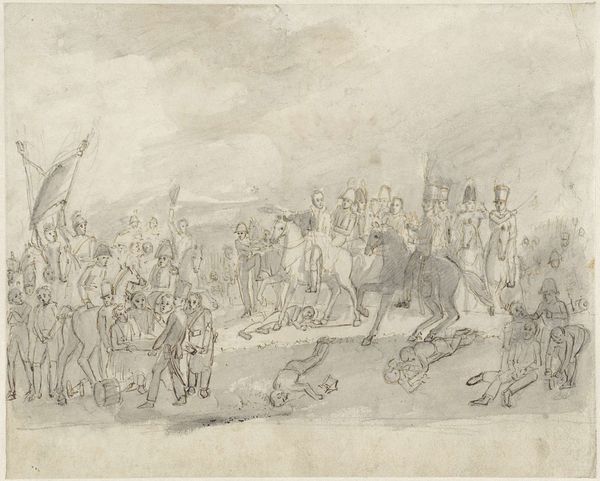
#
light pencil work
#
quirky sketch
#
pen sketch
#
personal sketchbook
#
ink drawing experimentation
#
pen-ink sketch
#
pen work
#
sketchbook drawing
#
sketchbook art
#
initial sketch
Dimensions: height 158 mm, width 229 mm
Copyright: Rijks Museum: Open Domain
Editor: Here we have an interesting work at the Rijksmuseum called “Prins van Oranje bij Quatre Bras, 16 juni 1815”, dating roughly between 1815 and 1900 and created by an anonymous artist. It seems to be a pen and ink sketch, quite light in its execution. I am immediately drawn to the movement it captures, even in its somewhat unfinished state. What compositional elements stand out to you? Curator: Indeed. The preliminary nature of the sketch reveals the artist's focus on the interplay of line and form to create a sense of dynamism. Note the strategic use of hatching and cross-hatching, particularly in defining the figures and creating volume. This technique, combined with the open composition where the scene extends beyond the frame, imbues the work with an immediacy, wouldn't you agree? How does the artist achieve depth and perspective with such minimal detail? Editor: The use of line weight really pops out to me now that you mention it; darker lines in the foreground help push back the lighter, more faintly rendered background, and perhaps suggest atmospheric perspective. It's clever for a simple sketch. I see now how that supports a focus on line and technique as the primary way to unpack the piece. Does this method preclude a discussion about the depicted battle and the Prince's actions during it? Curator: While acknowledging the depicted battle, one can appreciate how the artist emphasizes the formal elements. Observe how the implied lines of movement guide the viewer's eye, creating a circular path through the chaos of battle. This formal unity contrasts with the subject matter, and elevates it to a level of artistry independent of the historical narrative. The power here comes not only from the historical event, but in how the event is visually expressed. Editor: So it’s like the drawing creates its own reality, beyond the battlefield. This way of looking really puts a new perspective on historical art. I used to just see it as a record. Thanks. Curator: Precisely. Seeing the formal qualities reveals layers of intention and design beyond the illustrative. A study of the internal forces is in itself, equally profound.
Comments
No comments
Be the first to comment and join the conversation on the ultimate creative platform.

